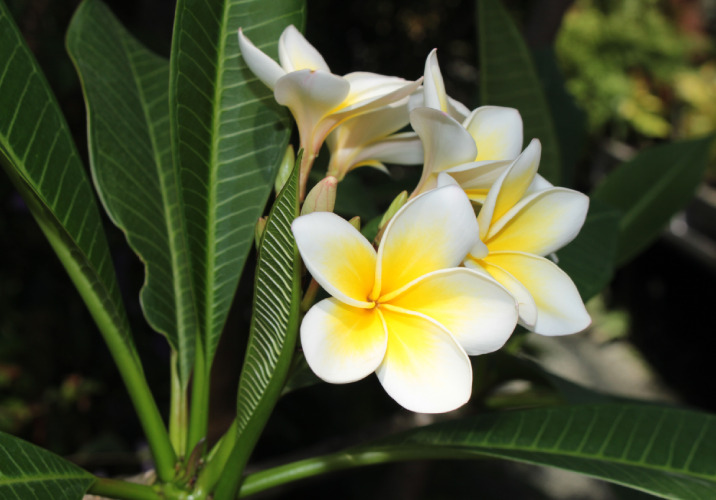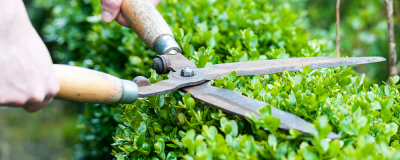
Find a local gardener
- Inspiration /
- Outdoor projects /
- Gardening & landscaping /
- Grow your own frangipanis
Grow your own frangipanis
How to grow them yourself from cuttings
Frangipani trees are not only beautiful, but they also smell absolutely delicious as they start to flower into spectacular shades of red, maroon, pink, orange, yellow and white. Best of all, they’re perfect for a wide variety of hot, dry climates because they’re not vulnerable to fire or drought. They can also grow in difficult soils, such as those with high salt content. If you’d like to grow your own frangipani trees, here are the basics you’ll need to know.
How to get cuttings
Frangipani trees are typically grown from cuttings that can be culled from woody or herbaceous stems, as well as from softwood, hardwood and semi-hardwood sections of the tree. In order to take a cutting, you’ll need to use a tree that is in very good health. Frangipani sap can irritate and burn skin, so use gloves while cutting.
Cuttings taken in winter or the plant’s dormant period will do much better than clippings taken at other times of the year. It should be a healthy adult tree that has plenty of trimmings to spare. Cut a branch that is about 20cm long. Once you have it, leave the cutting in a cool, dry place for at least a week to make sure the end is completely dry. The cutting can’t be in contact with soil, water or anything else or it won’t dry properly.
How to plant the cutting
Once the frangipani cutting is completely dry, it’s time to plant in into a pot. Make sure the pot is filled with free-draining potting mix, or even sand because this type of tree does not like to have its roots in standing water. The pot should be elevated from the ground a little bit so that the airflow extends all the way around the plant. You can plant right into the soil if you like but if you do so make sure the plant gets full sun throughout the day as it will require a minimum of six hours of direct sun daily. Keep the soil warm by using mulch but don’t allow the mulch to cover the cutting itself.
Frangipani trees thrive in well-drained soil with a slight acid content, so try to maintain a pH measuring 6.1 to 6.5. While they grow well in most soils and climates, frangipani trees greatly prefer hot temperatures and don’t thrive in areas where there’s severe frost. If you live in a cold climate, plant your tree in a pot and keep it indoors during the winter.

Use water sparingly
Frangipanis can’t take much water. While you might want to give the cutting more and more water to make sure it will take root, this will actually hurt the cutting. Water the cutting only once every few weeks — it shouldn’t need more than this. Over the next few weeks, you should begin to see roots developing, and the tree will begin to grow.
Moving the frangipani
Once your frangipani tree has grown roots into the potting mix, it’s a good idea to transplant it into a bigger pot of into a garden if you did not initially plant into a garden. Be careful while transplanting the cuttings, however, as the fragile roots can be easily snapped.
Contact local experts
Maintenance
During cooler months, frangipani trees need to stay dry, but they can be watered regularly during warmer seasons. While your frangipani is growing, enrich the soil with organic fertilisers that have high levels of potassium, phosphorus and nitrogen, and add compost, fire ash and animal manure for maximum benefit. If your frangipani is potted, enrich the soil with a potting mix containing one-third sand, as well as a slow-releasing fertiliser.
Frangipani leaves are susceptible to moulds, rust and fungi. If these occur, apply fungicide sprays containing a solution of white oil and copper. Detergent or white oil mixed with milk powder also helps prevent powder-like mildew and rust. By nourishing the tree, you’ll help prevent disease and infection.
Frangipani trees thrive when they’re pruned, so prune and shape them regularly. If the branches are dense and crowded, prune them to a half or a third of their length. These branches will then sprout extra shoots from the pruned ends. To avoid these extra shoots, prune all the way back to the main trunk. This way, the tree won’t develop any more branches in that area.
If you aren’t an experienced gardener or you need a bit of advice concerning your frangipani trees, call a local nursery or landscape gardener for assistance. By giving your frangipani trees the care and maintenance they need, you and your family will be able to enjoy them for generations.
Related posts
How much will your job cost?
The Oneflare Cost Guide Centre is your one-stop shop to help you set your budget; from smaller tasks to larger projects.



